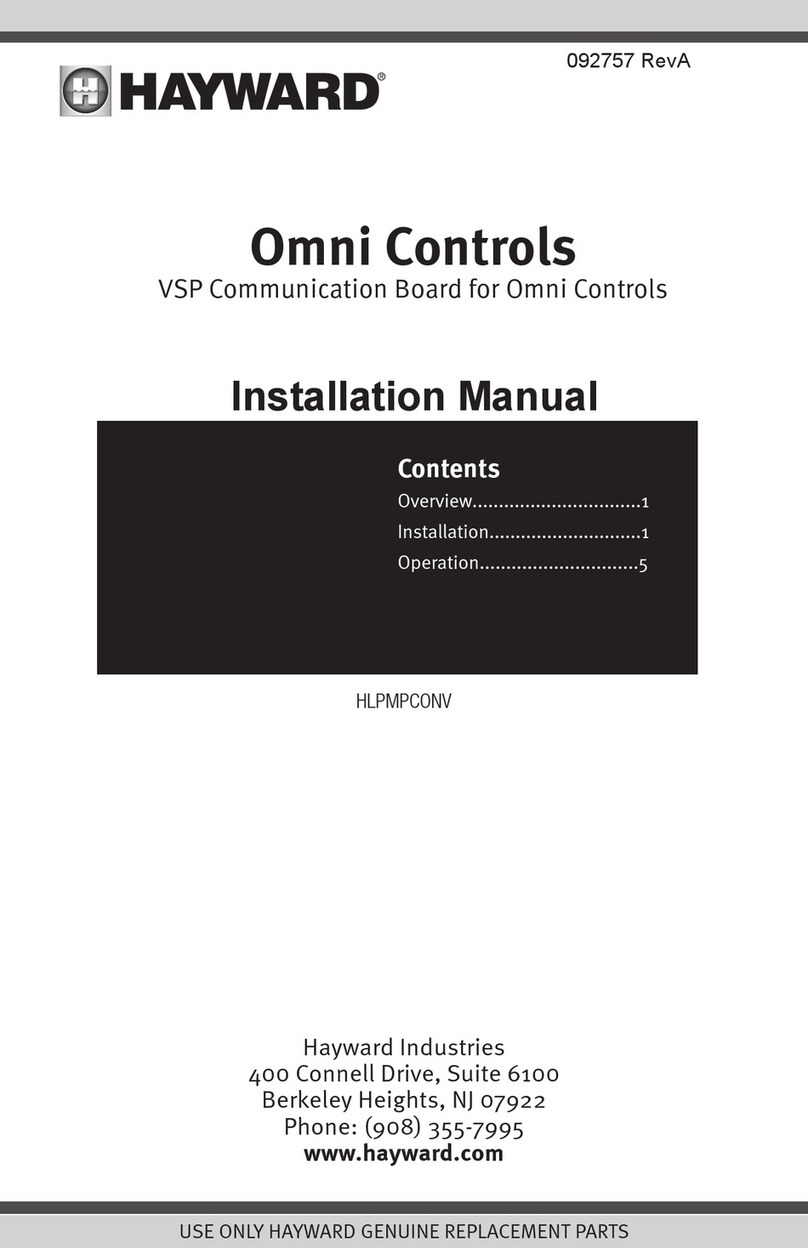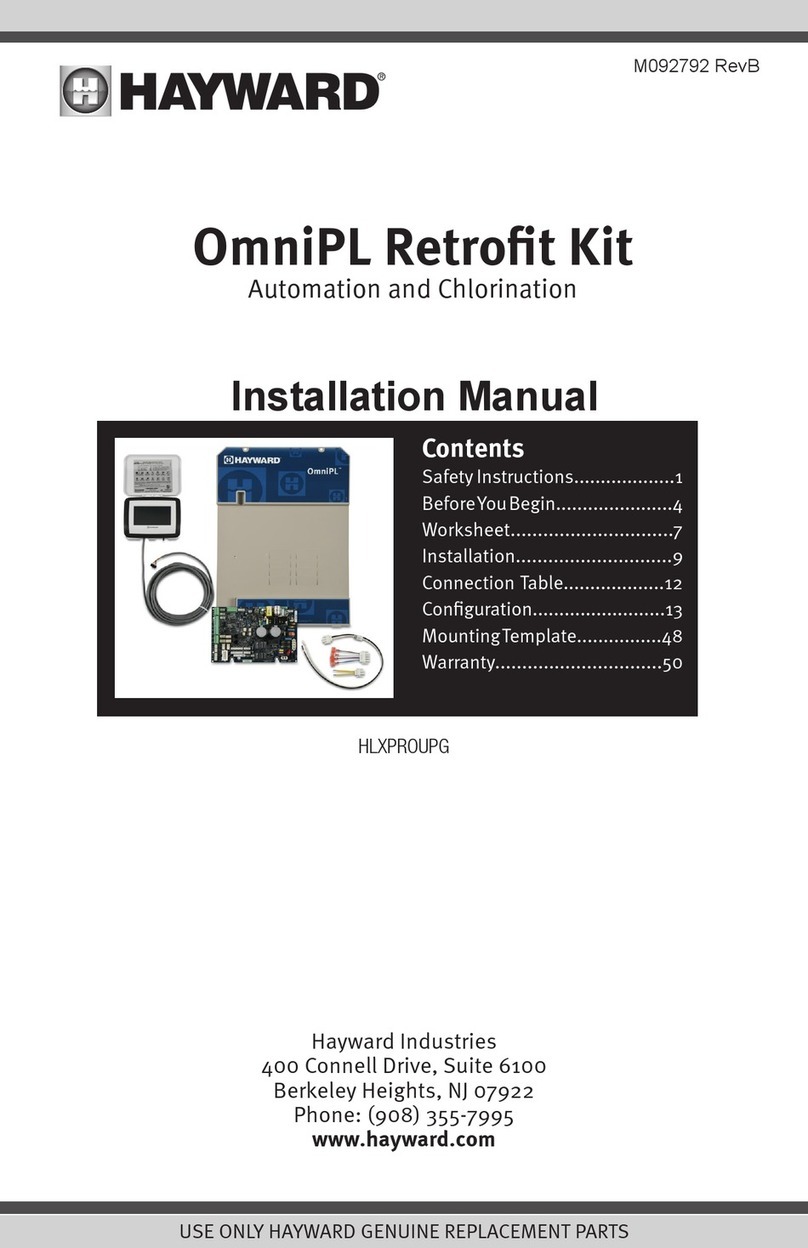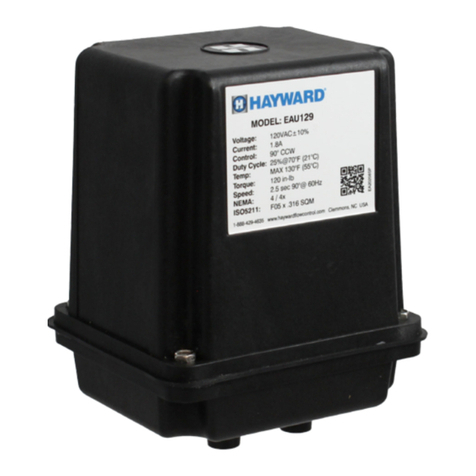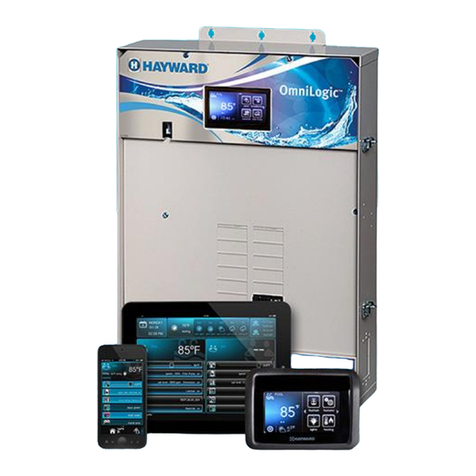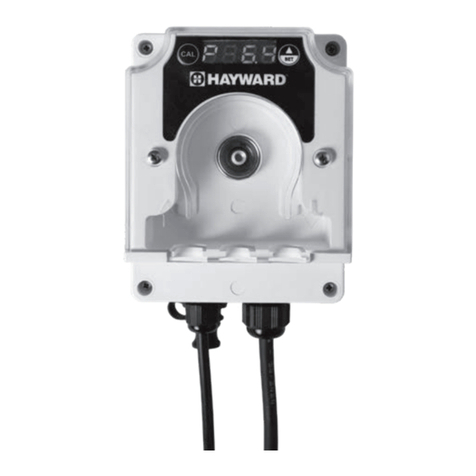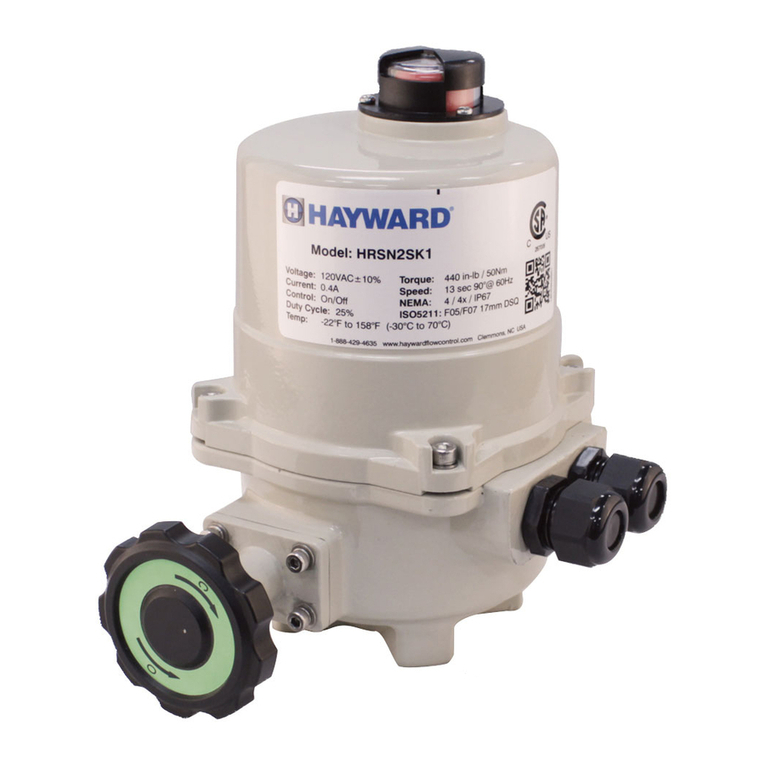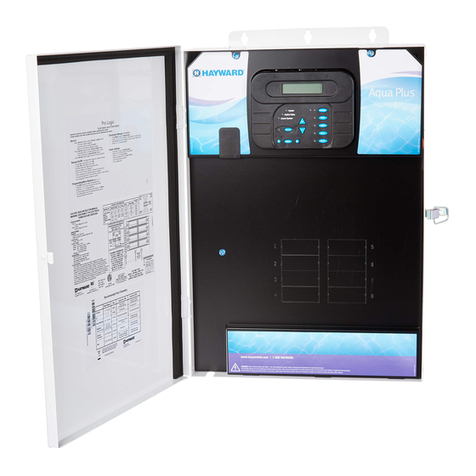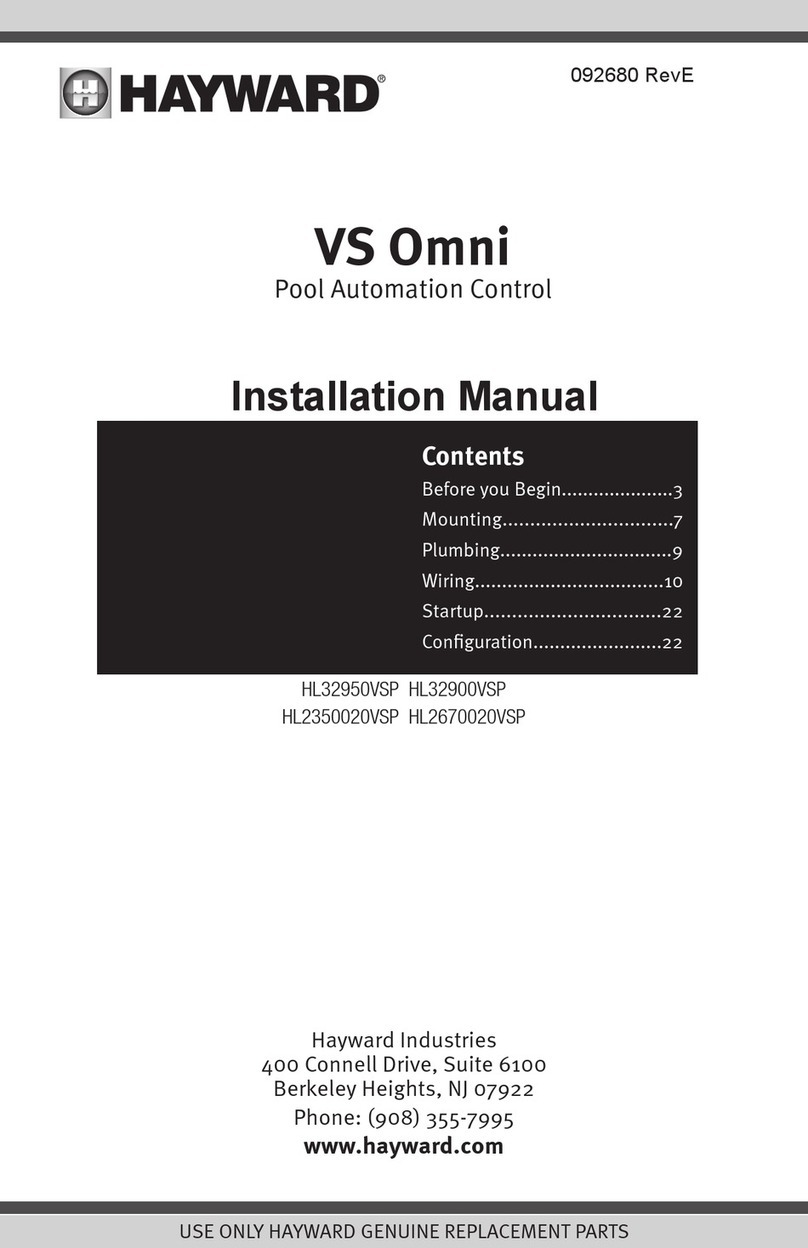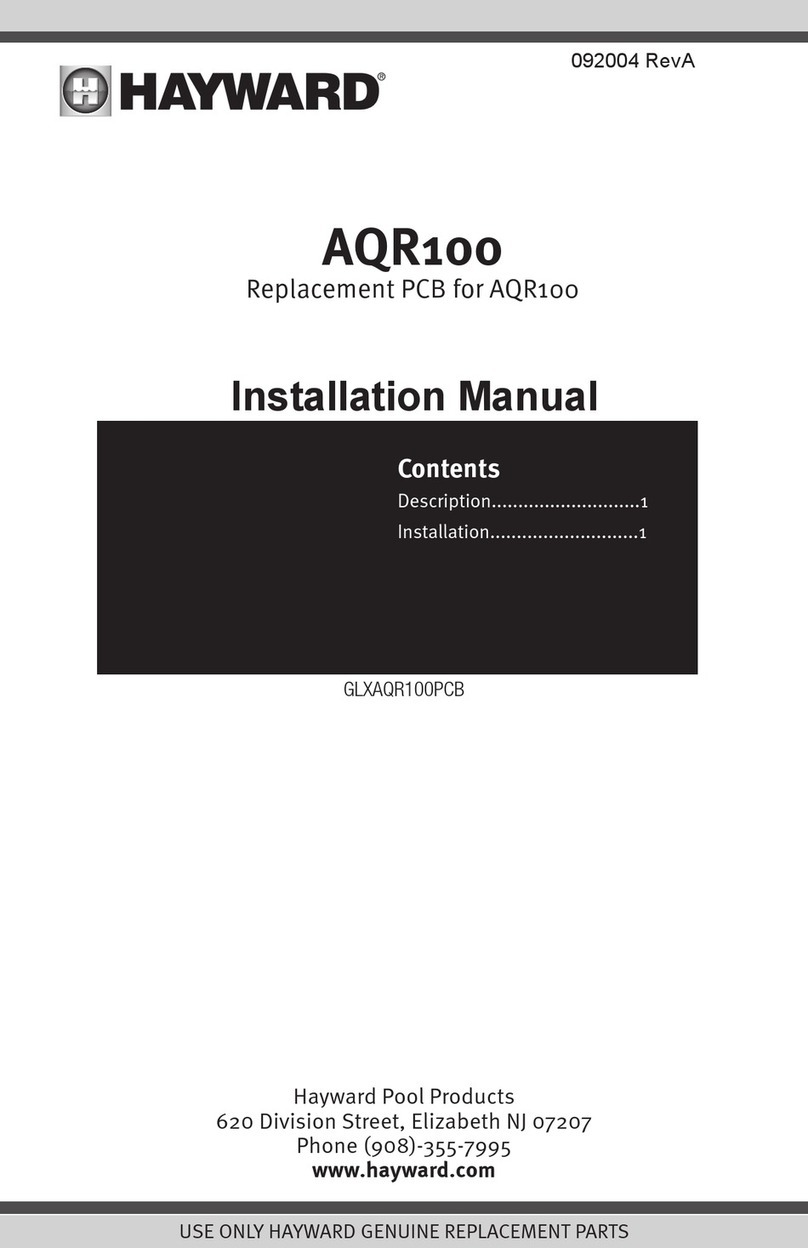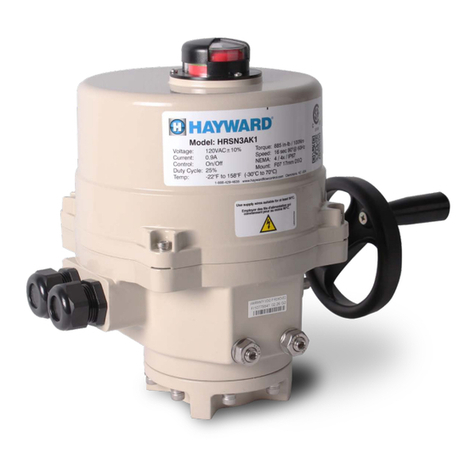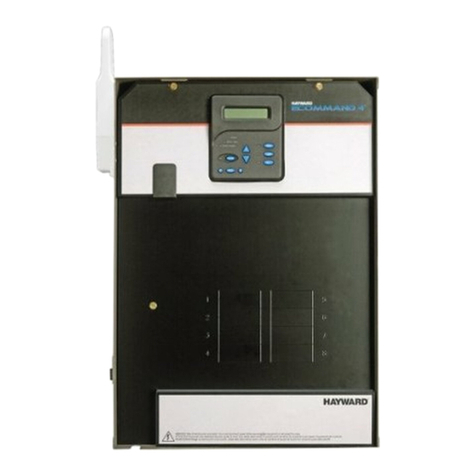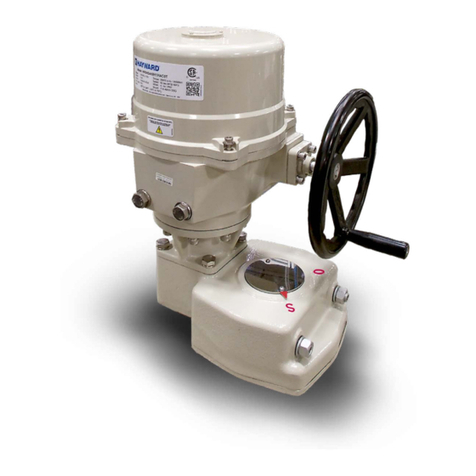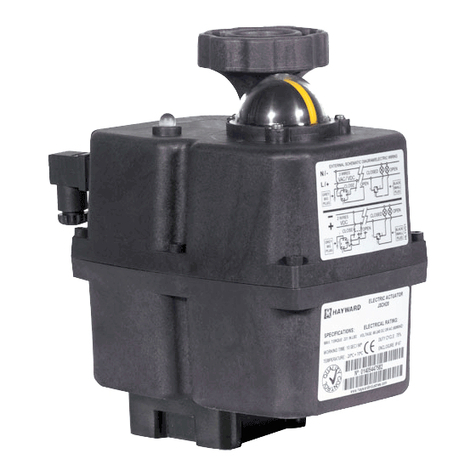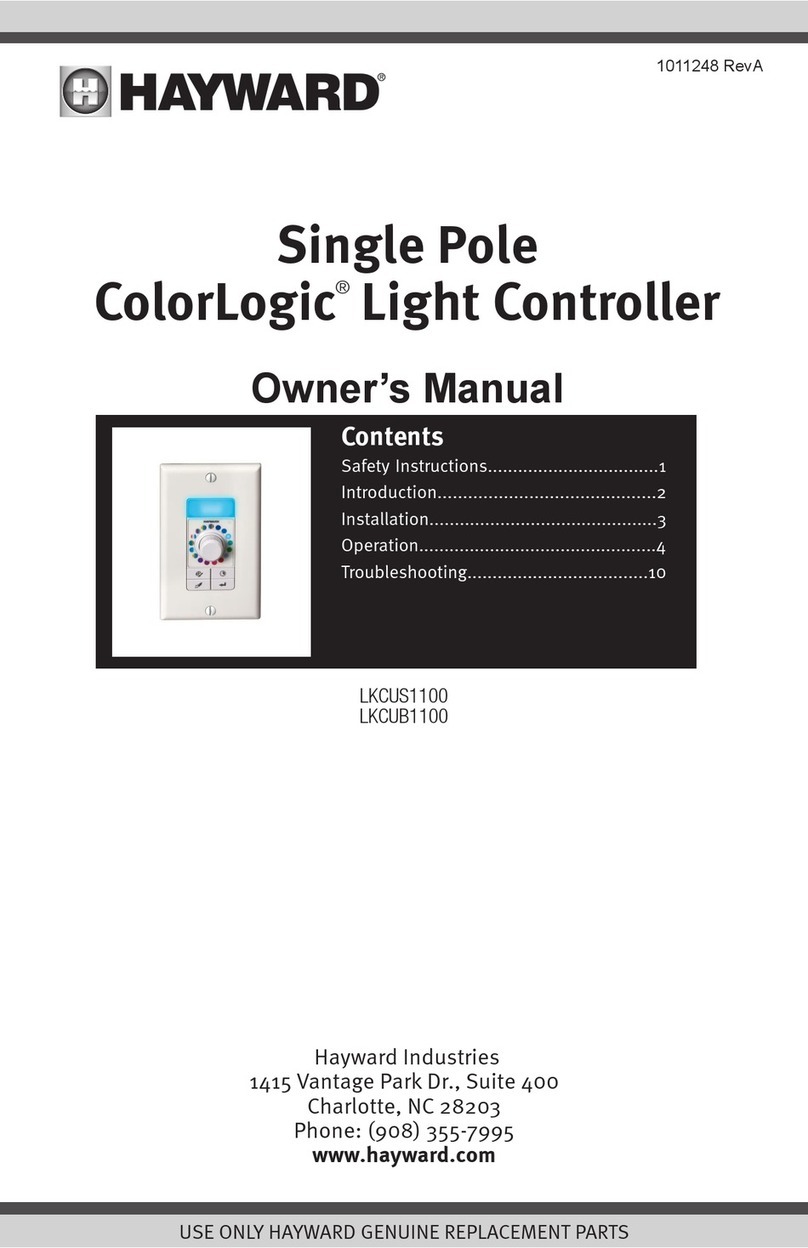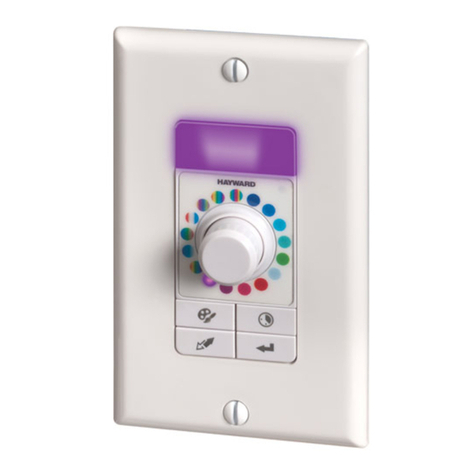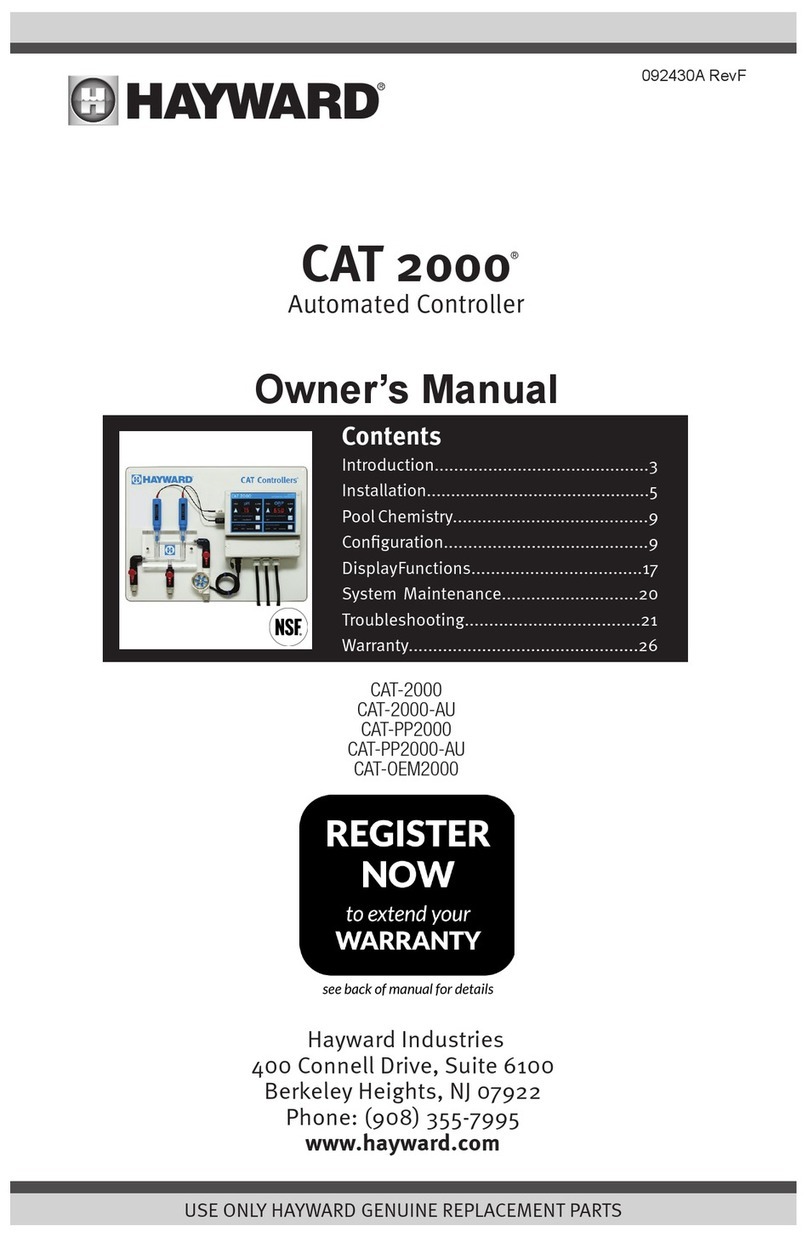
USE ONLY HAYWARD GENUINE REPLACEMENT PARTS
5
What is ORP?
When we are measuring ORP we are measuring the quality and the capability of the oxidizing component in the water. The oxidizing component can come
from chlorine, bromine, Ozone, non-chlorine shocks, hydrogen peroxide, etc. As we all know sanitizers will only work upon the result of a properly balanced
body of water. This is where ORP comes into play. ORP only measures specifically the ability and/or quality of the oxidizer present in the water. Its ability/
quality are reduced or increased in relation to the other water chemistry variables, pH, total alkalinity, total dissolved solids, temperature, the presence
cyanuric acid, the presence of chlorine neutralizers, etc. Simply put, it does not matter how much sanitizer is in your body of water, if the other chemistry
variables are not balanced the sanitizer WILL NOT WORK to its full “potential”.
Oxidation, in the past, was merely defined as the interaction between oxygen molecules and all dissimilar matter that they may come in contact with. Upon
the discovery of electrons, oxidation came to be more accurately defined as the loss of an electron when two or more matters interact. When a sanitizer
interacts with unwanted substances, it steals an electron from the substance changing its chemical make up in turn helping to burn the substance up.
However, now that the sanitizer has gained an electron it has “reduced” the sanitizer’s electrical energy making the sanitizer less effective.
Reduction occurs when a substance gains an electron after the oxidation process has occurred. The atom or oxidizer that gains the electron may lose their
ability to further oxidize substances or they will combine with other substances in the water resulting in by-products and/or combined chlorine.
Potential is the concept of stored energy within. The potential as it relates to ORP, relates to the potential of the sanitizer present in the water to oxidize
contaminants. The potential is measured in millivolts, a very small electrical reading. When an oxidizer is present in water it is attempting to steal negatively
charged electrons from any substance. If the substance is a platinum or gold electrode (ORP Sensor), once the oxidizer steals the negatively charged elec-
tron from the electrode the electrode will then generate more positively charged energy, therefore increasing ORP. The more oxidizer present in the water
the more positively charged the electrode becomes.
When discussing ORP, often times people like to leave out the reduction part of it. Why? Because we are measuring the potential of the oxidizer to steal
electrons, not the potential of substance being reduced or gaining electrons. However, if there are exactly the same amount of reducers, oxidizer atoms that
have gained electrons and oxidizer atoms that have not yet gained electrons, there will be no “Potential” for future oxidation. That is why we must continually
sanitize water or eventually it will result in the sanitizer being used up.
pH is the most important factor in keeping the strength of your sanitizer. The Potential of Hydrogen or Power of Hydrogen relates to HOCL and OCL. If you
have a lower pH, the HOCL (the stronger chlorine), will be more active and the sanitizer will be more effective. If the stronger part of your chlorine is working
harder and is more active, the more oxidizing potential it will have. Lower pH means more available H+ in the water, which means that the water will not
take the H+ as frequently from the HOCL, resulting in more HOCL and less OCL (your weaker free chlorine).
In conclusion, ORP (Oxidation Reduction Potential) is the measurement of the potential of the oxidizer present in the water to remove electrons from
unwanted substances. Once the unwanted substance loses its electron its chemical structure is changed and it is “burned up”. ORP is not tricked by the
effects of other variables present in the water. ORP tells you the true effectiveness of your sanitizer based solely on its ability to oxidize in that specific body
of water. The millivolt reading of 650mV has been designated as the potential needed for safe drinking water. The relationship of pH, FAC, and ORP are very
important. We must keep a more acidic (7.5 or lower) pH in our water to make sure our HOCL is more active which gives it more oxidizing ability, in turn
raising our ORP reading. Automated pH and ORP controllers constantly monitor both the pH and ORP in the water and make the necessary adjustments to
keep a proper pH and a proper amount of oxidizer present in the water to keep your water safe 24/7.
Components of the CAT-1000-ORP System
The following is a description of the components incorporated in a typical CAT 1000 controller system:
The Professional-Series ORP Sensor samples water from the filtration system and sends signals to the controller indicating the Oxidation Reduction
Potential (redox) of the water. ORP is an actual measure of sanitizer activity (chlorine, bromine, ozone etc.) and bacteriological water quality rather than an
expression of chemical residual levels. The CAT 1000 controller is preset from the factory to maintain ORP at 650 millivolts.
The Flow Sensor (required) monitors the flow across the ORP sensor and signals the controller to disable automated chemical feeding during periods
when the filtration system is off or low recirculation flow is detected.
The Flow Cell provides a convenient location for mounting the ORP sensor while ensuring ideal hydraulic conditions to maximize the sensor’s performance
and life.
The CAT 1000 Controller unit scans and interprets the signals from the ORP sensor, display water quality readings in digital format and activates the
chemical feeder in proportion to the demand required to maintain the ORP setpoint level. The unit incorporates audible and visual safeguard alarms for the
out of range conditions and mode selections to manually feed or disable feeding. The CAT 1000 controller unit also features an internal micro-computer for
unsurpassed accuracy, adaptability and ease of use. All user-entries and adjustments are made through the touch-screen interface front panel.

